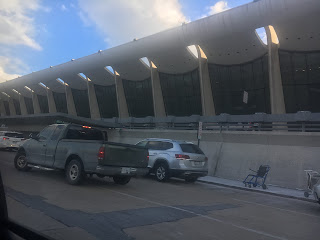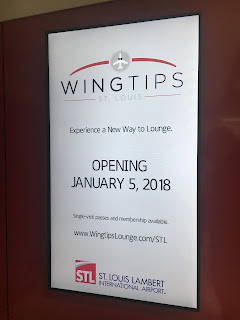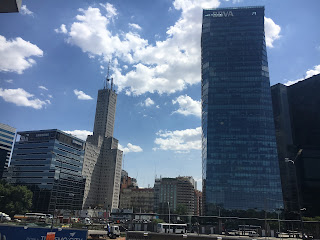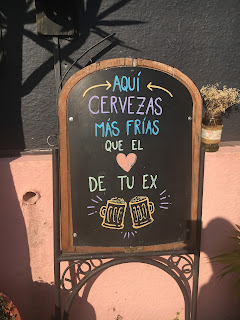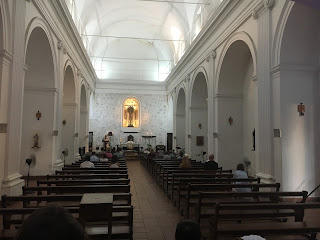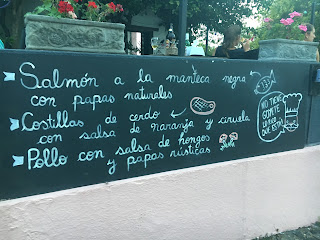It was time to leave Argentina and all of its delicious steaks behind and go home. The cheapest way to get home involved a layover which I would usually avoid but this time it was in a new country: Panama! That's #4 on this trip for those of you keeping track at home.
After reading the guide book I feel less bad about US involvement with the Panama Canal. I knew that Panama used to be part of Colombia and that Colombia was opposed to the US building the canal. In response to that we supported the Panamanian independence movement and then sent warships to protect the new country from Colombia. From my time in Colombia I'd gotten the impression that we'd sort of stolen the land but it sounds like people in Panama had wanted independence for some time and had multiple failed attempts at separating before we got involved. #Heroes
Panama is home to more bird species than the US and Canada combined and boasts more plants in the canal basin than all of Europe.
It was good that we were leaving because my feet felt like they were about to fall off.
This seems like a good time to give a shout out to this handy little guy. It's a universal plug with all sorts of transformer-like abilities that will shape shift into whatever weird W-shaped outlets a country might have. I just have this thing in my backpack at all times then I don't have to worry about it. Boom!
Our Uber man (Übermensch?) was on his first drive. He was very nice and conversational and I got to use each of the 10 Spanish words I know three or four times over. Me John. Me like cervezas. Y tu?
The word seems to be out about this whole airtravel thing.
By now we all know that if I'm gonna fly, I'm gonna need to do some lounging. Gotta lounge my way into an emotional state fit for air travel.
One thing I love about the food in lounges, and business/first class food on the actual plane, is they often do such a good job of showcasing their country's culinary culture. These alfajores were like little cake sandwiches with caramel in the middle. They date all the way back to when the Moors ruled Spain.
Santa pretended like he couldn't find my hotel in Chile. We aren't speaking right now.
On the plane I got right into Panama-mode as quickly as possible.
I turned on the air above my chair, not because I was hot but because I hoped it would blow away the frequent farts emanating from the bottomless cavern within the person whose fat body I was jammed in against. For six hours. The grand finale was her retching into her puke bag while we landed. Travel is so glamorous.
When the attendant asked if I was staying in Panama or taking a connecting flight I wasn't sure how to answer, I'm taking a connection tomorrow and this trip will be one big layover.
How to Be Single is actually pretty enjoyable with the sound off.
Get Hard was funny but more importantly it confirmed what I've suspected for years: I have fantastic fashion sense. That extra back there is wearing the same mermaid camo print shirt I have on in the picture on the top right of this blog.
Lydia's always hating on my bright orange puffy party vest. What now Lydia? She was jellier than a donut all the way to Panama City.
Panama City is a city in Panama.
Panama is home to more bird species than the US and Canada combined and boasts more plants in the canal basin than all of Europe.
I'm too lazy to type this out right now but it's a pretty interesting story about the connection between London's Portobello Road and Panama's Puerto Bello puerto. I went shopping on Portobello Road in London. Street where the riches of ages are sold. No big deal.
Our room at the Radisson Decapolis Hotel Panama City was very tastefully decorated.
I was a little perturbed though because I specifically requested a 12 boob room at the front desk. I counted 9 boobs tops.
By the time we got situated it was so late that everything was closed, and we had to leave early the next day to go home. We pretty much just lounged in the room next to the boobs the whole time. What I know about Panama is:
they have a Hard Rock Hotel
and their King of Beers tastes pretty much like our King of Beers.
When it was about to hit midnight we took the elevator to the top floor of the hotel to see what sort of New Year fireworks we might be able to see. When the doors opened I was pretty surprised. It was like a construction site and the lights were all off. Once I got over the weirdness I came to the conclusion that it was a perfect place to watch the show.
We were pretty much living the last scene from Fight Club.
Our hotel got a lot of reviews. We don't know if they were good or bad though.
The next day we packed up and got out of town.
When we were checking in the guy at the ticket counter said "Milito, do you play soccer?"
I'm pretty much twins with former Inter Milan footballer Diego Milito so I don't blame the guy for getting confused. I learned that we are distantly related while doing my Milito genealogy research, but that's a story for another time.
It was cheaper to fly to DC then take a cab to Baltimore, so that's what we did.
Bout to tear the club up.
St. Louis is about to get a lounge of its own! Hurray!


































